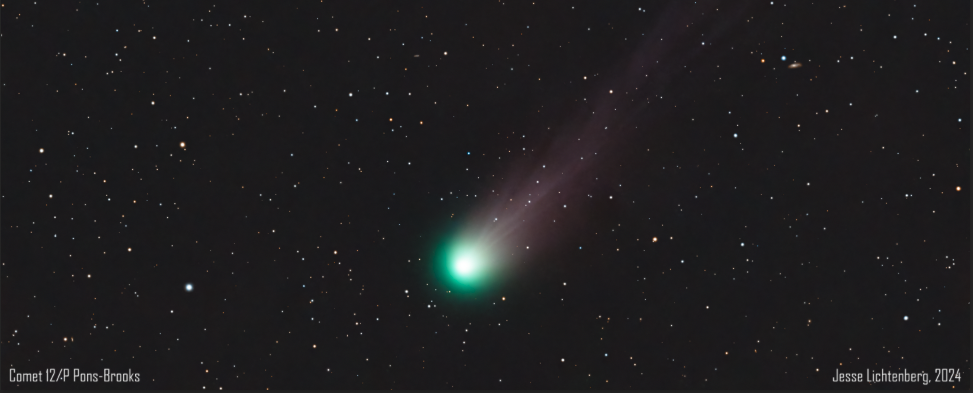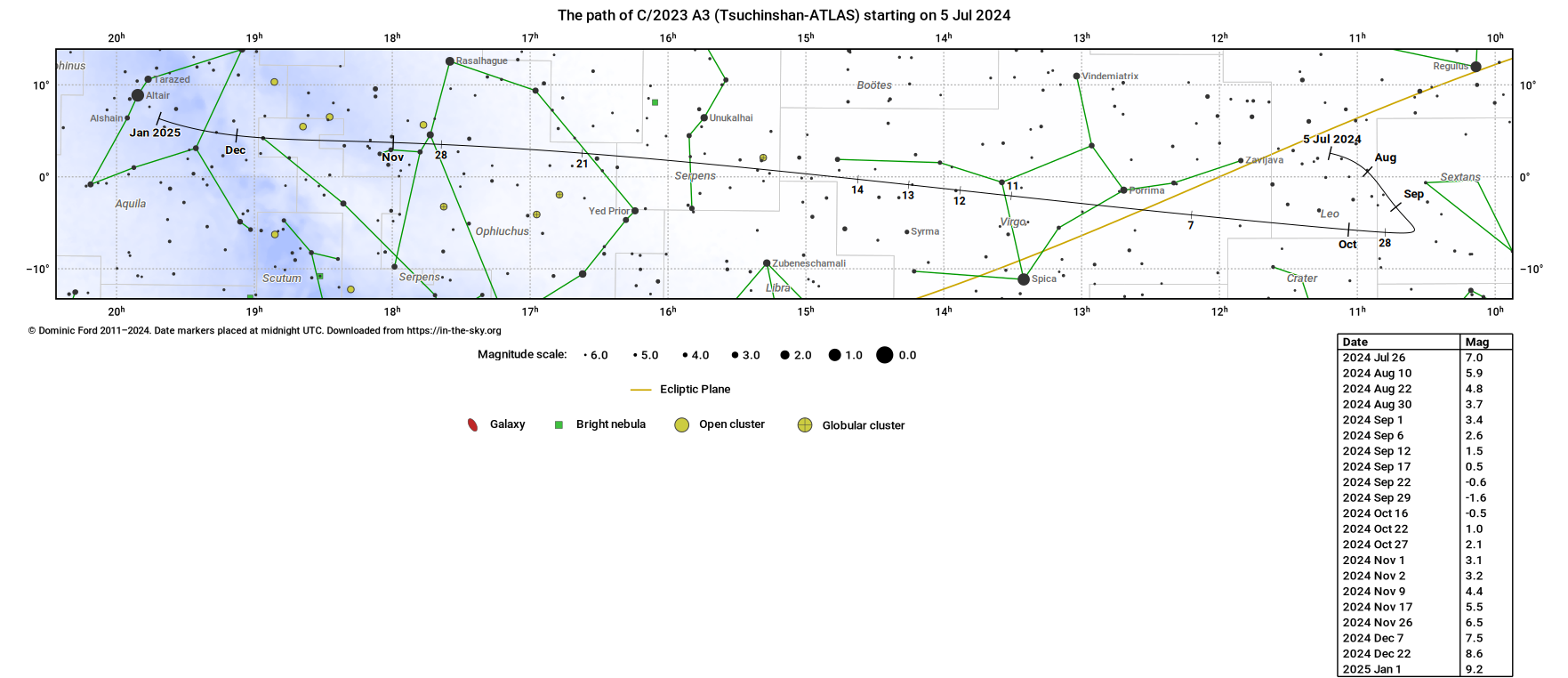
C/2023 A3 (Tsuchinshan–ATLAS) - The Next Great Comet?
On a seemingly ordinary February night in South Africa, the skies whispered the arrival of a new voyager from the depths of space. The ATLAS project, designed to sound the alarm for incoming asteroids, spotted what they initially thought was just another wandering rock. But as it turns out, this was no ordinary asteroid; this was a comet, with some scientists speculating that this comet may have been freshly peeled from the Oort Cloud, embarking on an inward odyssey towards the sun for the first time with fresh material sublimating in the inner solar system that can cause a spectacular apparition. Other scientists caution that “A3” may have made its journey to the sun many times before, and that the ices and gas could be somewhat depleted. Which is it? We don't know, but there are reasons to be optimistic for a bright comet, and maybe a Great Comet.
Comet C/2023 A3 (Tsuchinshan–ATLAS) carried its secrets until pre-discovery snapshots from China’s Purple Mountain Observatory and further studies by the Zwicky Transient Facility in the USA unveiled a hazy halo of gas and dust cradling its nucleus – the hallmark of a comet.
At first glance, hidden within the Serpens constellation, the comet appeared as a mere whisper of light, shy at an 18th magnitude. Yet, as it journeys towards its closest approach to the sun on September 27, 2024, we anticipate a remarkable transformation. From a staggering distance of 680 million miles to a cozy 36 million miles, its brightness is predicted to surge as it pays a warm visit to the inner solar system.
The true spectacle awaits us shortly after this intimate solar encounter. The comet will sweep by Earth at a proximity of 44 million miles, offering sky enthusiasts the best seats in the universe to witness its grandeur.
Circle the dates from October 12th to 19th, 2024, for this is when the comet could blaze as brightly as the most luminous stars. Even with the moon’s luminous interference peaking on the 17th, this comet could flaunt a bright glowing head and a proud tail.
Once thought to be the ‘comet of the century’ with prospects of outshining Venus, expectations have been tempered, yet the anticipation remains high. Remembering the words of comet discoverer David Levy, “Comets are like cats: they have tails, and they do precisely what they want.” This means we can only speculate, but hope remains that Comet Tsuchinshan–ATLAS will be a beacon bright enough to capture hearts and minds, drawing many into the fold of greater scientific literacy and for some, a lifetime of astronomy.
As mid-October approaches, direct your binoculars and telescopes west-southwest after the sun dips below the horizon. Whether through Explore Scientific’s Giant Binoculars, Vixen’s stargazing titans, or the crisp eyepiece on an Explore Scientific Dobsonian, the cosmos offers a front-row experience to this cosmic spectacle.
Gear to Explore Comets
- Explore Scientific Giant Binoculars
- Vixen Giant Binoculars
- Explore Scientific Dobsonian Telescopes
- Explore Scientific Low Power Wide Field Eyepieces
- Explore Scientific ED80 Air-Spaced Triplet with iEXOS 100 German Equatorial Mount
- Unistellar Smart Telescope
More Information
- Printable Charts for C/2023 A3 (Tsuchinshan–ATLAS) from In The Sky
- Observations, Images, and Predictions on Seiichi Yoshida’s Comet Home Page on Aerith.net for C/2023 A3 (Tsuchinshan–ATLAS)
Credits
- Feature Image Credit: Jesse Lichtenberg on AstroBin
Imaging Telescopes/Lenses: Explore Scientific ED127 Essential Series Air-Spaced Triplet Refractor
- Sky Map Credit: Dominic Ford In-The-Sky.org



Laisser un commentaire